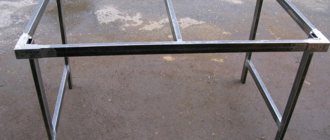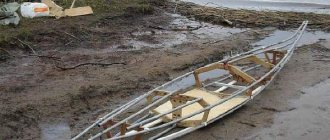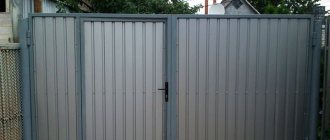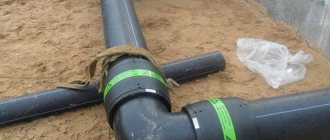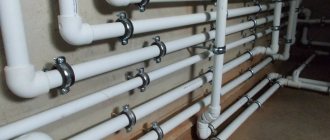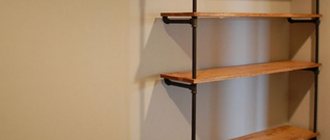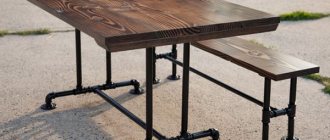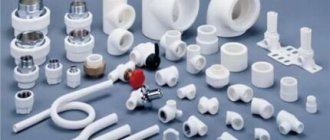09/15/2020 Author: VT-METALL
Issues discussed in the material:
- Types of water pipelines and proper welding of pipes
- How to choose electrodes for proper pipe welding
- Methods and tips for proper pipe welding
- Preliminary work for proper pipe welding
- Correct pipe welding: step-by-step algorithm
- Safety precautions when welding pipes
Proper welding of pipes is a real art that allows you to create durable plumbing. Often, households use inexpensive and lightweight plastic pipes or easy-to-install profiles. However, these options are not always practical.
In order for the water supply to serve for a long time, it is important to correctly organize the entire work process: from the choice of electrode to the welding technology.
Types of water pipelines and proper welding of pipes
A variety of pipelines are used to move different materials and fluids. Depending on their purpose, they can be:
- technological;
- main lines;
- industrial;
- gas supply pipelines;
- water;
- sewer.
Pipelines are made of ceramics, plastics, concrete and metals.
Proper welding of pipes is carried out in one of the following ways:
- Mechanical, in which the result is achieved through friction.
- Thermal, during which materials melt (gas, plasma, electric arc welding).
- Thermomechanical, which is performed by butt contact method using a magnetically controlled arc.
Types of welding can be classified on various bases. Before you start processing pipes, you should choose the most suitable method. Theoretically, any of them is suitable for working with pipes of different diameters. Pipelines can be welded using pressure (gas press, cold, ultrasonic and contact welding) or melting (electric arc and gas). Most often, manual or mechanized electric arc methods are used to properly weld pipe joints.
Soldering iron for polypropylene pipes
This design works on the principle of an electric iron. A metal heating element is used as a base. It comes with additional attachments designed for different pipe diameters.
To carry out butt welding of a polypropylene pipeline, other types of structures are used. They have a heating part and a system that is responsible for fixing the parts to be welded.
Such equipment is classified into several groups. These include:
- Non-professional models. They are small designs designed for products with a diameter of 50 mm. For this purpose, replaceable nozzles are used;
- Mechanical welding. The advantage of this type is considered to be reliable welding for pipes with large diameters. The package includes an instrument unit, a hydraulic unit, and a set of replaceable nozzles. The lateral borders are provided with grips in the form of half rings.
Technical characteristics directly depend on the number of additional accessories and the manufacturer. They are developed for certain models of welding machines.
How to choose electrodes for proper pipe welding
Before you start welding heating pipes or any other pipes, you need to stock up on electrodes. Their quality directly affects the reliability of the resulting connection, the tightness of the structure, as well as the welding process itself.
Electrodes are a thin steel rod with a special coating that provides a stable arc during operation and forms a weld that prevents oxidation of the metal.
Electrodes are qualified by the type of core and outer coating.
Depending on the type of core, electrodes are divided into:
- consumables with a non-melting center made of graphite, electrical coal or tungsten;
- with a melting center - wire, the thickness of which varies depending on the type of work performed.
Based on the type of external coating, electrodes are divided into the following groups:
- With cellulose coating (grade C). Designed for proper welding of large diameter pipes; they are used to install gas and water mains.
- With rutile acid coating (RA). Used to work with metal heating or drainage pipes. The resulting weld is covered with a small layer of slag, which is removed by tapping.
- Rutile coated (RR). Allows you to obtain neat welding seams with slag that can be easily removed from the surface. These electrodes are used for corner joints, as well as when welding the second or third layers of metal.
- With rutile cellulose (RC) coating. They can be used for correct welding of pipes in any planes, for example, when creating a long vertical seam.
- With base coat (B). These are universal consumables suitable for working with thick-walled pipes and parts intended for use at sub-zero temperatures. Allows you to obtain a high-quality plastic seam that is not subject to cracking or deformation.
Before starting welding work, it is worth obtaining advice from welding specialists regarding their preferred brands of electrodes. At the same time, there can be quite a lot of recommendations, and consumables may vary depending on the store or city.
We recommend articles on metalworking
- Steel grades: classification and interpretation
- Aluminum grades and areas of their application
- Defects in metal products: causes and search methods
There is a direct connection between the cost and quality of consumables. With cheap electrodes it is difficult to weld pipes correctly and obtain a high-quality weld. Therefore, there is no need to save on these consumables.
Preparing for work
Before proceeding directly to welding, preliminary preparation should be carried out. Its stages are the same regardless of which method is used.
First of all, you need to prepare a work site of sufficient size that will accommodate all the necessary equipment, the pipes and fittings themselves (if used). Before starting work and connecting the welding machine to the network, check the integrity of the electrical cables. It is also worth making sure that the clamp and electronic sensors are in good working order, the cutter knives are sharpened, and the liners prepared for work match the diameter of the pipes. Parts that are subject to friction during operation are lubricated, and the heater, trimmer and scraper are cleaned and degreased.
The pipes themselves are also processed: the surface at the supposed joints is cleaned. In this way, it is possible to get rid of various contaminants that would interfere with creating a reliable connection.
Methods for proper pipe welding
There are various methods for properly welding polypropylene pipes and products made from other materials using the electric arc method:
- end-to-end - in this case the pipeline elements are located opposite each other;
- in a T-bar - in this case, the pipe sections are located perpendicular to each other (in the shape of the letter “T”);
- overlap - this method involves flaring one of the pipes, allowing it to be put on the other;
- angular method, in which the elements are placed at an angle of 45° or 90° relative to each other.
In the process of proper pipe welding, the following types of seams are obtained:
- horizontal (with a vertical arrangement of pipeline elements);
- vertical (if the pipes are located vertically);
- ceiling (with the electrode placed above the welder’s head, in the lower part of the workpiece);
- lower ones (you have to bend over to do this).
If it is necessary to connect steel pipes, the butt method is used. In addition, the joint must be welded to the thickness of the workpiece wall. A bottom turning seam is best for this.
To obtain a high-quality welded joint during the work process, you should adhere to the following recommendations:
- During welding, the electrode should be positioned at an angle of 45° or slightly less. This will reduce the amount of molten metal entering the pipeline element being welded.
- For T-welding or butt welding, 2-3 mm electrodes will be required. A high-quality welded joint will be obtained with a current varying from 80 to 110 amperes.
- To get a reliable overlap connection, you will need to increase the current to 120 amperes; 2-3 mm consumables (electrodes) are also suitable.
- The weld seam should rise 3 mm below the surface of the workpiece being welded, after which we can talk about completing the work.
Correct welding of profile pipes is carried out spot-welding, that is, first two points located on opposite sides of the profile are welded, then two other points, continuing work until the entire pipe is heated. Next, a welding seam is formed along the entire perimeter of the workpiece.
Construction of pipelines.
When constructing pipelines, the pipes are butt welded. The assembly of pipes for welding is done using special devices called centralizers. The gap between the diameters of the welded pipes is allowed no more than 1 cm.
When welding, a weld reinforcement is formed, which is called burr. From the outside it can interfere with insulation, and from the inside it can interfere with the passage of the pipeline. Therefore, after welding, excess is removed using a special device - a deburring device.
To speed up the laying of pipelines, they usually use not individual pipes, but sections at once, that is, parts of the pipeline welded in workshop conditions. The main method of joining pipes in industrial conditions is automatic submerged arc welding or flash butt welding. This ensures the tightness and strength of the welds.
Preliminary work for proper pipe welding
Before you begin to properly weld plastic and metal round pipes, you need to pre-process the joints and clarify a number of nuances. First of all, they diagnose the pipe’s compliance with certain technical characteristics that apply to the installed system, in particular to the water supply system.
Necessary:
- observe geometric dimensions;
- have a quality certificate, especially if a pipeline for drinking water supply is to be installed;
- so that the pipe is perfectly round in shape, since defects, a flattened or oval section of the workpiece are not acceptable;
- control the wall thickness along the entire length of the pipe - it should be the same;
- The chemical composition of the part must comply with the requirements of GOST - this information is contained in the technical documentation or is determined in the process of laboratory research.
After this, you can begin preparing the pipes for joining and welding.
During the preparation process, you must complete the following steps:
- check the evenness of the cut at the end of the pipe, it should be 90°;
- thoroughly clean the end of the workpiece to be welded and the 10 mm area around it until a metallic sheen appears;
- remove residual oils, rust, paintwork from the surface of the pipe, degrease the ends of the element.
In addition, you should ensure that the end has the correct configuration. The opening angle of the edge should be 65°, the dullness index should be 2 mm. The required parameters can be obtained through additional processing.
Correct pipe welding: step-by-step algorithm
In electric welding, a strong connection between workpieces is achieved through a thermal process. In this case, the quality of the seam will be higher than with gas welding.
If the pipes are located in an accessible place and can be rotated, then it is necessary to connect the two pipeline elements end-to-end with one or three electric welding points, and then continue welding the workpieces:
- continuously (if it is possible to rotate the parts);
- with a separation, starting from the bottom, if the pipe is located inconveniently and there is no way to rotate it.
Welding work is performed in two approaches. Initially, the first seam (“root”) is made, covering 2-3 mm of the joint of the workpieces, after which the resulting deposits and scale are removed. Then a second seam is formed, which is also cleaned.
The algorithm for proper pipe welding is as follows:
- Before you start working directly, you need to take a stable position and take care of good lighting of the space.
- Light the arc, increasing the current if necessary.
- Place the electrode at the beginning of the weld, form a weld pool, maintaining a constant arc gap.
- A sufficiently large current will cause particles of straightened metal to follow the heat.
Movements must be adjusted and careful, since too much current will cause the metal to melt too much, begin to bubble, and it will not be possible to form a weld. - In the process of properly welding pipes, it is necessary to ensure that the edges are filled and that there are no undercuts.
If the current is low, then the weld pool will be equal to the outline of the electrode. By increasing the current, moving the electrode in a circle or from side to side, you can form the correct welding seam. Attention should be paid to the quality of welding during the processing of workpieces, ensuring the uniform filling of the weld pool. - Place a point, leaving a small amount of metal.
- Extinguish the arc along the seam.
Over time, you can learn how to properly weld pipes and form high-quality seams, but it will be easier for those who previously observed the work from the outside or were a welder’s assistant.
Gas welding
To perform gas welding, acetylene cylinders or gas generators are used.
The use of generators, especially in large cities and enterprises, is not relevant. This method requires a lot of time to obtain gas and safely operate welding equipment. Therefore, for welding metal pipes, flammable gas cylinders are connected.
The use of acetylene is due to its high combustion temperature. Propane is used to cut steel pipes.
When connecting pipelines with a wall thickness of no more than 3 mm, cutting the edges is not necessary. Parts with thicker walls require edge preparation on one side or two-sided cutting at an acute angle.
When working with gas welding, the best seam is obtained in the lower position. It is possible to make such a seam only with a rotary joint.
Gas welding is often used to weld workpieces in a fixed position (when the pipe cannot be twisted or turned). Such work is entrusted to highly qualified welders who can make seams in the ceiling, horizontal and vertical positions.
The process itself involves melting the edges of parts with a burner fire, adding filler metal to steel wire and forming a weld leg.
Joints of steel pipes made by gas welding are superior to joints made by electric welding in terms of fullness and less heating of the steel.
Safety precautions when welding pipes
During electrical work, including pipe welding, it is necessary to comply with safety requirements. Their violation can result in various injuries, for example, thermal burn of the skin or retina due to an arc flash, electric shock, etc.
To avoid trouble, you should pay attention to the following before starting work:
- electrical wires and parts of the welding machine must be insulated;
- the body of the welding equipment and additional devices must be grounded;
- You can only wear completely dry overalls and gloves;
- for additional insulation it is necessary to use galoshes or a rubber mat (for a small room);
- Be sure to protect your eyes and face by wearing a protective shield.
By following the information presented in the article, you can independently learn how to properly weld pipes using electrical equipment. However, it is impossible to achieve success without practical skills. Using our recommendations, you can start practicing welding and over time get decent results in welding metal pipelines.
The order of preparatory work
Welding pipes using manual welding will require a number of preparatory steps from you:
- Clean the welding area from dirt and oils.
- For high-quality welding, the pipeline elements must be installed end-to-end and aligned with each other.
- Set the optimal welding mode and install electrodes on the welding machine that meet the technological requirements.
- Before starting welding work, install grounding contacts on the pipes.
- To more reliably secure the pipeline elements to each other, make several tacks around the circumference - small welds that fix the exact position of the elements being welded.
